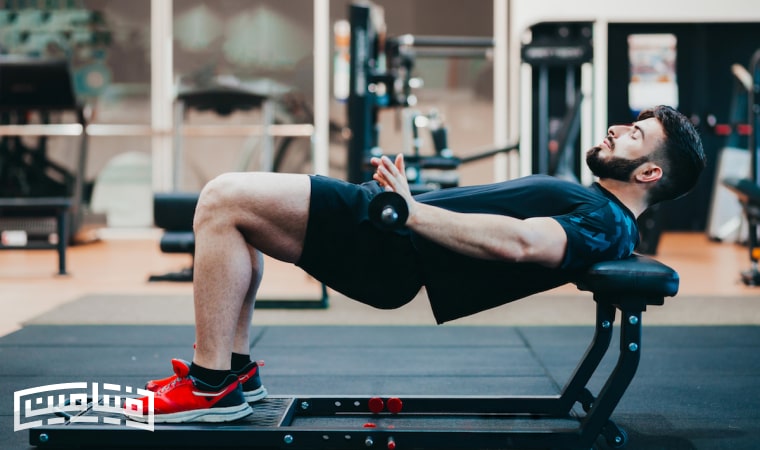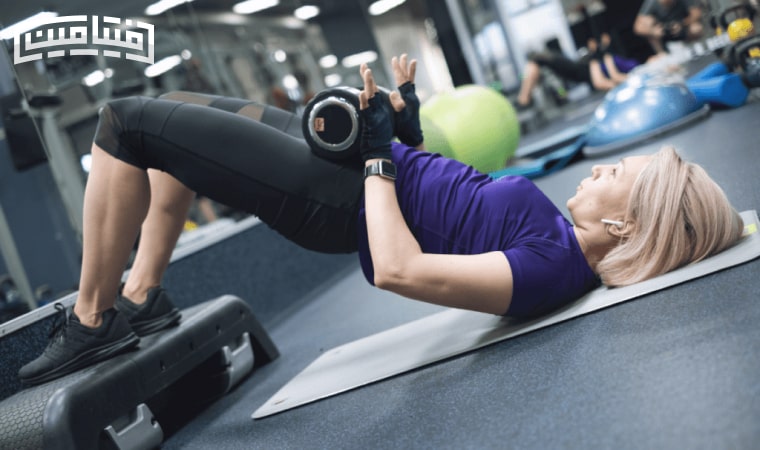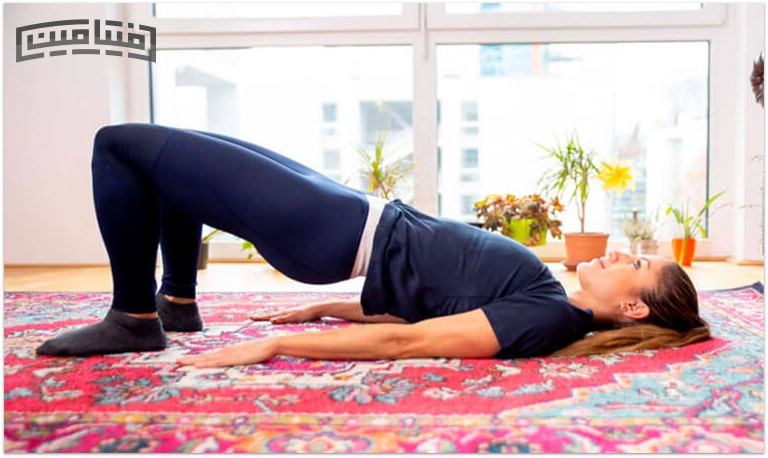What is hip trust and how is it done? Which muscles does the hip thrust movement involve and what is its benefit for our body?
Hip thrust is a common and famous strength exercise in the world of bodybuilding, which is performed in different ways. This movement primarily engages and strengthens the gluteal muscles. But other muscles of the body are also involved with this exercise. In this article, you will be fully acquainted with the hip thrust movement and its benefits.
What is the Hip Trust movement?
The hip thrust is a very effective strength exercise designed primarily to strengthen the glutes, especially the gluteus maximus, which is the largest muscle in the body. Of course, it involves other muscles of the lower body and has a special role in strengthening the leg muscles and preventing various injuries. The hip thrust movement, focusing on hip extension movements, plays an important role in increasing the strength and volume of the lower body. If you are interested in increasing the volume of your gluteal muscles, then you definitely need this exercise.
Muscles involved in hip thrust movement

The movement of the hip trust in the first degree gluteus maximus It targets the largest muscle in your body. Also AMedial and minor gluteus maximus, hamstrings, quadriceps, and adductors It involves well. It is also necessary to Muscles that straighten the spine and midsection Let’s also mention that they get involved during the implementation of hip trust.
The growth of these muscles can improve both the strength and volume of the lower body very well and increase the overall performance of your body. Because the stronger the muscles are, the joints of the lower body such as hips, knees and ankles are under less pressure and work better.
The correct way to move the hip thrust
There are different types of hip thrust movement and we will teach you a simple type below. Our usual advice is to first learn the simplest form of a movement and master its correct execution without any weights and dumbbells, then move on to the execution of difficult types of that movement with weights. The simplest type of hip thrust is to do it on a bench without weights and dumbbells:
How to move
- Sit on a bench so that the shoulder blade is on the edge of the bench and the soles of the feet are on the floor, the legs are shoulder-width apart, you can rest your elbows on the bench;
- Lower the body very slowly, so that the hips are close to the ground;
- After a two-second pause, press your heels to the floor and lift yourself up, so that the whole body from the neck to the trunk to the knees are in the same line;
- Now do this exercise from the beginning.
- If you are a beginner, do this exercise in 3 sets of 12 with body weight.
- If you don’t have a couch, you can stack 4 or 5 steps or do it with the edge of the sofa.
Types of hip thrust movement
- Dumbbell hip thrust movement
- Hip Trust Barbell
- Hip trust on the ball
- Smith machine hip trust movement
- Single Leg Hip Thrust Movement
- Seated Hip Trust
- Seated Hip Trust Smith Movement
- Single Leg Seated Hip Thrust
- Simkash sitting hip trust
Benefits of hip thrust movement
Hip thrust has various benefits that if you learn about them, you will definitely add this movement to your leg day program at the gym!
1. Strength and volume to the buttock muscles
The hip thrust movement is very popular and well-known for its effect on the volume of the buttock muscles.
Hip Trust engages all three pelvic muscles (large gluteus maximus, middle gluteus maximus, and small gluteus maximus) well, and as the overload increases over time, the growth of these muscles is stimulated more and better. Therefore, if you want to have strong and well-shaped (round) buttock muscles, doing the hip thrust movement is essential.


2. Improving daily movements and sports performance
The gluteal muscle is the largest muscle in the body and plays a vital and essential role in everyday activities such as walking, standing and climbing stairs. Also, if you are an athlete, you need strong glutes to shine in your sport.
The stronger your glutes, the better your performance in sports that require explosive lower body power (such as sprinting or jumping) and in sports that require They require speed or agility (such as taekwondo or football) and you will get much better.
Most people or athletes go for exercises like squats or lunges when they want to strengthen their glutes. But hip thrust is just as effective as these exercises.
3. Strengthening the mid-body muscles and other lower body muscles
Hip thrust is not only for strengthening and shaping the hips, but also involves the mid-body muscles such as the spine straightener or abdomen. It also engages the hamstrings, quadriceps, and inner thighs well to improve the strength of your lower body muscles.
4. Low pressure on the knee joint
The hip thrust movement does not put pressure on the joints, including the knee. Therefore, if you cannot perform lower body exercises such as squats or lunges due to a knee injury, be sure to add hip thrust to your program.
5. Improving posture and reducing pain
Muscle groups in the human body are designed to work in pairs. It means that one muscle contracts and the opposite muscle lengthens. A muscle that contracts is called an agonist, and a muscle that lengthens is called an antagonist.
It is important that the two are balanced, otherwise the body must compensate for this imbalance by bending forward or backward. In the case of the hips, the antagonist muscles are your hip flexors. If they are stronger than your gluteal muscles, they can tilt your pelvis in an unnatural direction. As a result, you will experience pain and other problems. Therefore, strengthening the buttock muscle is very necessary for the static posture of the body and the prevention of chronic pains.


Alternative hip thrust movement
If you feel pain in your back while performing hip thrusts, you should definitely stop the exercise. It is possible that the way you implemented it was wrong and you need to see the training of the correct implementation of hip trust again. But this pain may have other reasons (such as putting extra pressure on the back) and it is forbidden to continue training with back pain anyway.
What should be done in this situation? You should go for hip trust alternatives! In the following, you will see 10 of the best exercises as an alternative to this movement.
- Scott
- Squat with cable
- Step up
- sumo deadlift
- Romanian deadlift
- Bulgarian squat
- Kettlebell swing
- Hip bridge on the floor (shoulders on the floor)
- Wire Donkey
- loin fillet
final word
The hip thrust is a common strength exercise and has many variations. This movement primarily engages and strengthens the gluteal muscles. But it also involves other muscles of the body and plays a big role in increasing the volume and strength of the lower body muscles. In this article, we talked about the hip thrust movement and its benefits and taught how to do it.
Resources: verywellfit – healthline
RCO NEWS
RCO
















